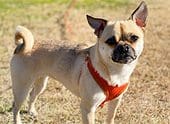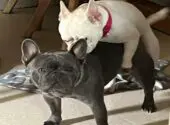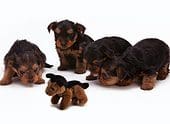Do you want a dog that is both incredibly confident and wonderfully playful? If yes, consider getting a Chug (aka Chihuahua Pug Mix).
The Chug takes after its Chihuahua roots in terms of confidence; despite their small size, they have a fearless attitude. This dog will stand up for himself and as his owner and won’t back down on anything.
On the flip side, the Chug’s Pug lineage brings out its playful side; this dog will happily play with your kids until their heart’s content. And Chugs are not just great playmates; these dogs also make great cuddle buddies.
But caring for a half Pug, half Chihuahua requires some special considerations when it comes to diet and exercise, yet the rewards are more than worth it. See below for all you need to know about this mixed breed.
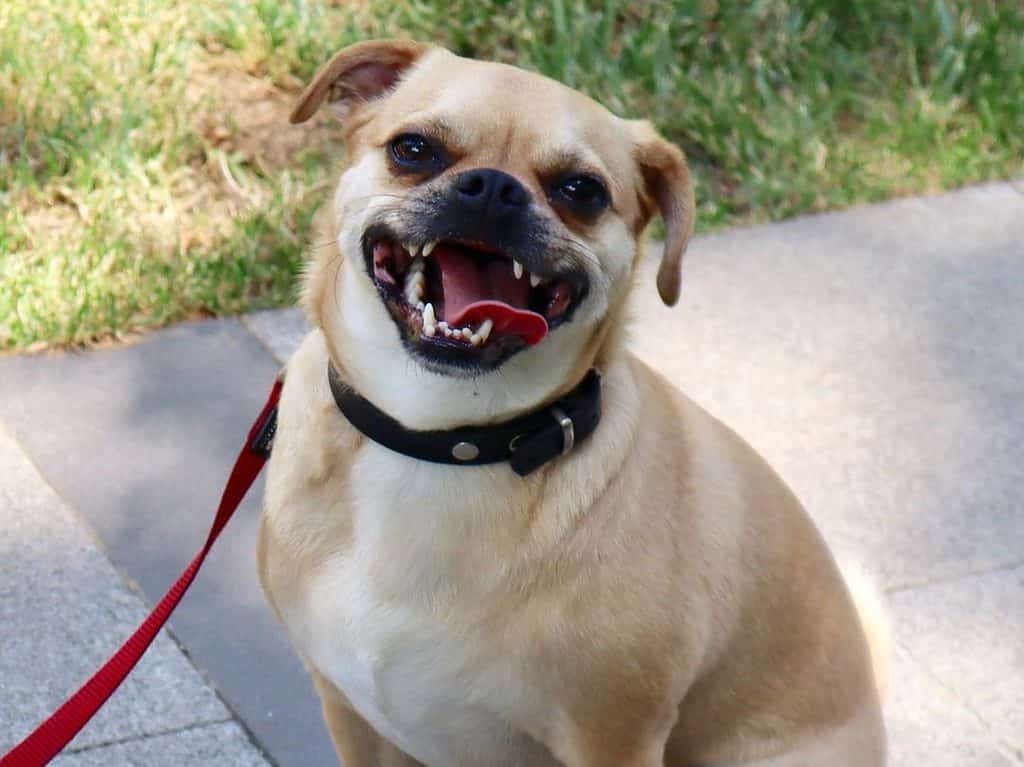
Quick Facts: Chug
Height
6 - 9Weight
10 - 20Lifespan
10 - 12Breed Size
small (0-25 lbs.)Breed Type
mixedBreed Group
companionTemperament
anxious, playful, protective, strong-willed, affectionate, confidentGood With
familiesIntelligence
highShedding
frequentExercise Needs
highBarking Level
highEnergy level
highDrool Amount
lowCoat Type
short and smooth, long and coarseCoat Patterns
bi-color, brindle, sable, tri-colorColors
black, cream, fawn, white, brownOther Characteristics
apartment-friendly, high potential for weight gain, prone to health issues, strong loyalty tendenciesChug (Aka Chihuahua Pug Mix) Highlights
- Although small in size, Chugs possess big personalities. They often attempt to imitate large dogs in their actions, providing an amusing contrast with their stature.
- Due to having a shorter snout than most dogs, Chugs are at an increased risk of experiencing heat stroke in hot conditions. Owners should take extra precautions when attending to their health and well-being during higher temperatures.
- Many Chug owners report that these canines possess a peculiar character, prone to quirky behaviors and lighthearted antics. They are sure to bring cheer into your home.
- Many Chugs tend to be overly vocal, which can make them effective watchdogs with proper training and socialization. Nonetheless, correcting excessive barking early is necessary to avoid potential behavior problems.
- Chugs may become overweight if fed too much. It is crucial to adhere to a responsible feeding regimen and dietary plan.
- Whether you have a large family or are living solo, this breed fits into any home and promises plenty of unconditional love.
History
The Chug dog breed likely originated in the United States during the early 2000s as a product of purposeful and intentional cross-breeding by dog breeders. The goal is to create a mixed breed with advantageous qualities.
To better understand the Chug, let’s look at the parent breeds: Chihuahua and Pug.
Chihuahua
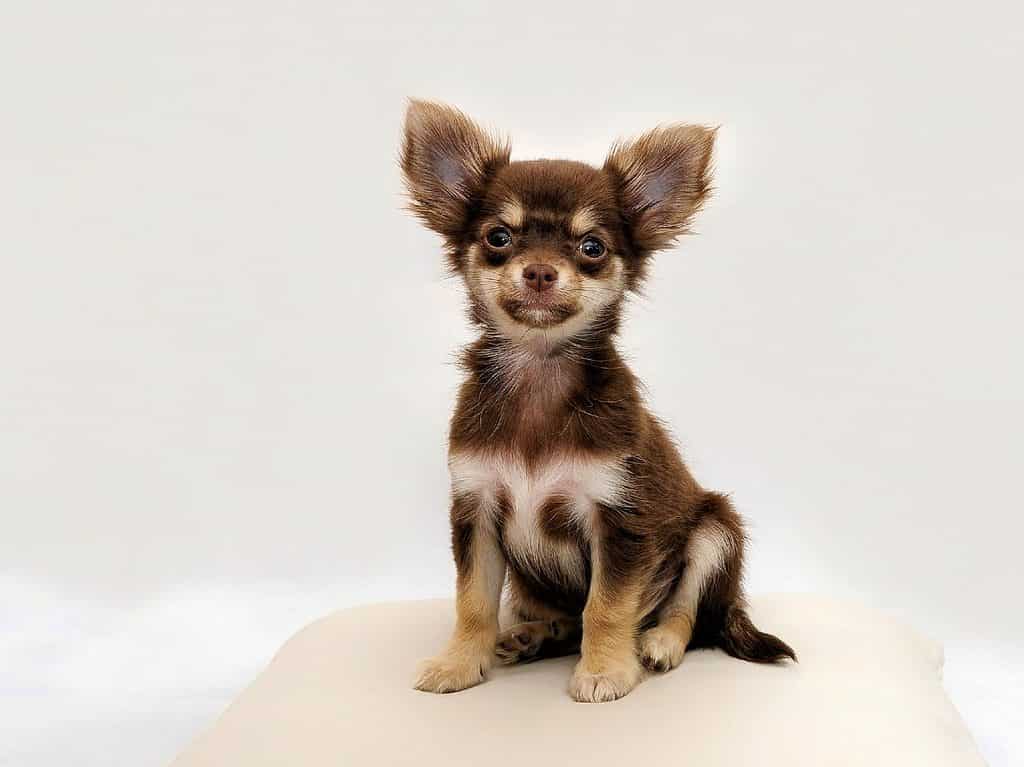
Modern Chihuahuas bear an unmistakable genetic similarity to Mexico’s pre-Columbian canine, as evidenced by samples obtained in that region. Research findings conclusively established that the genealogy of Chihuahuas is linked to Techichi, a canine native to the deserts of ancient Mayan civilization.
Techichi dogs served a sacred purpose for Toltec culture, as these animals were used in ritualistic sacrifices. Furthermore, Toltecs believed that these canines guided to the afterlife departed souls. It was a common practice for ancient civilizations to bury Techichi dogs alongside their loved ones who had passed away.
As the Aztecs ascended to power in Mexico during the 13th century, they welcomed the Techichi dogs into their culture. Various inscriptions and illustrations discovered in Aztec pyramids and shrines document the existence of Chihuahuas. The Aztecs later crossbred the Techichi dog with another breed, resulting in what we know today as the modern Chihuahua.
Pug
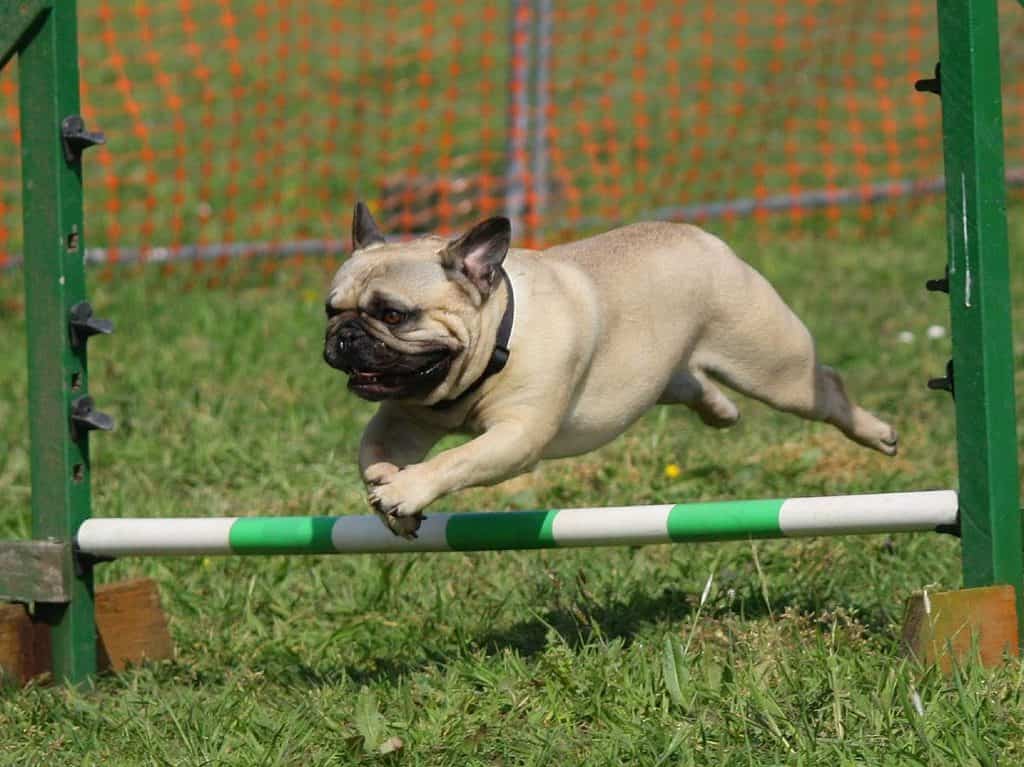
Several historians have noted that the Pug’s lineage dates back to ancient China, with the first records of their existence being found as far back as 700 BC. During this era, Chinese aristocrats rigorously experimented with careful selections of short-legged canines to produce predefined breeds according to their coat color and length. These canines served as the forerunners of certain breeds, which are in demand today, like the Pug.
Subsequently, Buddhist monks typically retained Pugs in their religious retreats in Tibet. The Buddhist monks held the animals as devoted companions.
During the 16th to 17th centuries, Pugs began to spread throughout Europe. In the 19th century, they made their way to America, soon gaining significant popularity.
Appearance

Canines possessing the characteristics of both Pugs and Chihuahuas, commonly referred to as Chug dogs, typically have a facial structure composed of a short snout with almond-shaped eyes and prominent wrinkles.
Chug (Aka Chihuahua Pug Mix) Size
Because the Chug is a comparatively new breed, there is a lack of set requirements for size. Nevertheless, given that Chugs are combinations of Chihuahua and Pug parents, one can anticipate them to be small. This makes them ideal for apartment settings.
On average, Chugs stand between 6 to 9 inches tall and weigh 10 to 20 pounds when fully grown.
Chug (Aka Chihuahua Pug Mix) Colors
The coat of a Chug can feature varying colors, such as white, cream, fawn, black and brown.
Coat
Chugs bear a coat that appears to be smooth and short, yet this does not guarantee that they are hypoallergenic. Regular grooming should limit the amount of hair shed; however, this may not prevent shedding entirely.
Some Chihuahua Pug Mix dogs have a double coat that sheds continually throughout the year. Additionally, the pattern of the respective coats may vary and appear bicolor, tricolor, brindle or sable.
Personality

Chugs are often known for their playful nature. Owners commonly report that they enjoy chasing and being lavished with physical affection. Additionally, these dogs can be quite spirited, bringing entertainment into any household.
Due to their Chihuahua parentage, Chugs can often form a strong attachment with one particular individual in the family; as such, they may act out defensively if their preferred person is perceived to be in danger. Thankfully, there are approaches to address resource guarding and related behavioral issues.
The Pug and the Chihuahua tend to vocalize with barking or excessive yelping, thus making it likely for a Chug to behave similarly.
A Chug is a perfect choice if you need a reliable watchdog to warn you of any visitors at the door. With adequate preparation, your Chug can be trained to control its barking.
Health
The Chug is genetically prone to developing the same physical ailments and diseases as the breeds it was produced from, the Chihuahua and Pug. Although most Chihuahua Pug Mixes lead healthy lives, some may be genetically susceptible to certain illnesses. Consequently, vigilant owners must ensure that their pets receive regular veterinary exams and proper care to address any potential health concerns.
Some of the more common health problems Chugs suffer from include separation anxiety, heat stroke, loose kneecaps, patellar luxation, eye diseases, heart problems, breathing problems, and obesity.
Lifespan
This mixed breed can live up to 12 years, making them an excellent companion for families who want to love their pets for many years to come.
Care
Chugs can be predisposed to obesity and require significant physical activity. Therefore, pet owners should ensure their dogs receive at least thirty minutes to one hour of exercise daily, with active play sessions scattered throughout the day.
The intelligence of Chugs is readily apparent as they require little training to acquire the necessary skills. Unfortunately, this breed can be quite stubborn and uncooperative; thus, patience and dedication are necessary when attempting to train them.
If you employ positive reinforcement when training a Chug, evidenced by verbal affirmation, playtime and treats for desirable behavior, the learning process will be expedited. But bear this in mind: a Chug cannot necessarily be expected to always act according to your wishes, thus requiring patience and a suitable demeanor when living alongside them.
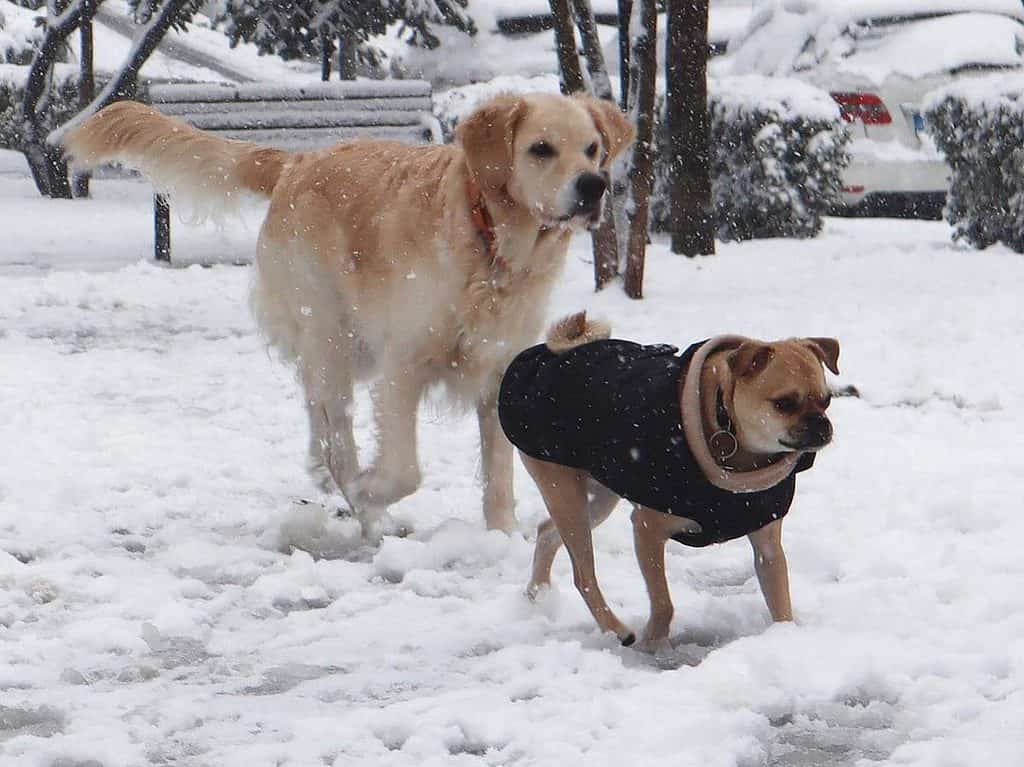

Additionally, Chugs are not designed to endure extreme temperatures. If you reside in a place with traditionally lower temperatures, your Chug must wear an appropriate coat or sweater when going outdoors.
Diet
A carefully constructed dietary plan should be implemented for small, high-energy breeds, such as a Chug to ensure optimal nutrition and avoid potential weight gain associated with overfeeding.
Adhere to a consistent feeding plan and do not leave out food during daylight hours. Furthermore, strive to limit the number of treats given.
The nutritional requirements of a Chug shift from puppyhood to adulthood and remain in flux as the animal ages into its senior years, similar to most dogs. Consult with your veterinarian for dietary suggestions in regards to your Chug, as each dog possesses unique characteristics such as energy levels, weight, and overall health.
Grooming
In the case of Chugs, their coat length may vary; normally being short and smooth but could be longer if one of their parent breeds is a longhaired Chihuahua.
Due to the Pugs’ notable ability to shed, a Chug is expected to experience the same shedding qualities that come with the breed lineage. Therefore, you should brush the Chug coat daily to eliminate any shedding hair, improve its luster and keep pet hair from covering your living space.
Furthermore, it is important to trim the nails of a Chug regularly every few weeks, as well as monitor their ears for cleanliness and dryness. Also, brushing with a vet-approved pet toothpaste should be done routinely.
Chug (Aka Chihuahua Pug Mix) Puppies
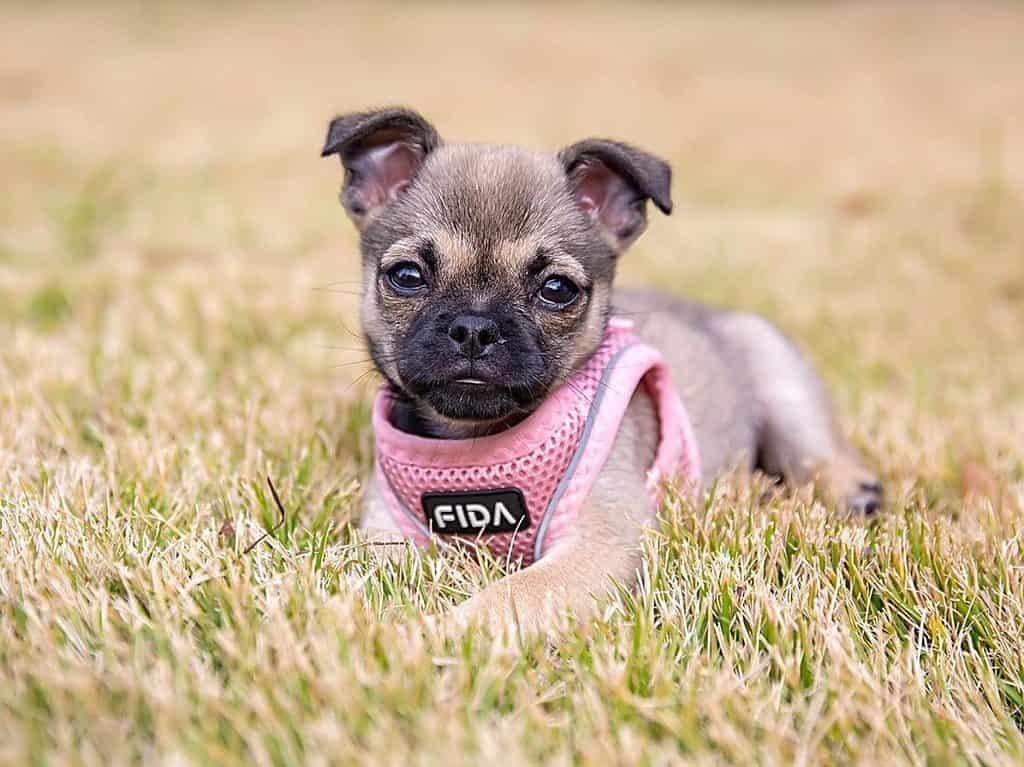
Mixed breed Chug puppies are unpredictable in terms of the physical features they may inherit. They likely have a combination of traits from both parent breeds. Breeders observe the pups daily and can make remarkably precise judgments.
We highly recommend that you directly consult the breeder to provide details on what specific qualities you seek in a Chug dog and request their help selecting the ideal puppy. Ideally, you should seek out one whose lineage exhibits good temperaments.
Children and Other Pets
Chugs are a delicate breed and are best presented in homes with older children who understand proper etiquette when interacting with animals. This is because they can be easily harmed during rough play.
These dogs also benefit from a singular-pet household dynamic like their Chihuahua parent. This doesn’t mean Chihuahua Pug Mixes cannot live with other pets. As with other dog breeds, Chug dogs depend on proper training, adequate socialization, and their genetic makeup to develop their temperament.
Rescue Groups
Although originally bred as a consequence of designer trends, some Chugs have been placed within shelters or under the supervision of the following rescue groups.
Chihuahua Rescue Truckee Meadows
Buffalo Pug & Small Breed Rescue
Chug (Aka Chihuahua Pug Mix) FAQS
What is the life expectancy of a Chug dog?
With proper care, your Chug will be part of your family for up to 12 years.
Are Chug puppies easy to train?
While Chugs are intelligent and can easily comprehend commands, their independent nature often results in them trying to impose their own will during training, making it a challenge for owners.
Are Chugs affectionate?
Chugs have an affectionate personalities, making them suitable for owners that want a cuddly pet.
Are Chugs healthier than Pugs?
Compared to Pugs, Chug dogs possess a slightly longer snout, leading to fewer respiratory issues commonly seen in brachycephalic breeds.
Do Chugs shed a lot?
When it comes to shedding, the answer is that Chugs shed a lot if they inherit their Pug parent’s coat. But no matter what coat your pup inherits, regular grooming can help keep shedding at bay so you can enjoy more time cuddling up with your furry friend without all that extra hair showing up around the house.
Chug (Aka Chihuahua Pug mix) Fun Facts
- Chugs are also called Chihuahua Pug Mix, Pugwawa, and Pughuahua.
- The American Kennel Club does not recognize the Chihuahua Pug Mix as an official breed.
- A Chug puppy may exhibit characteristics and behaviors of both parent breeds or take on traits more closely related to only one.
References
Haimel, G., & Dupré, G. (2015). Brachycephalic airway syndrome: a comparative study between pugs and French bulldogs. Journal of Small Animal Practice, 56(12), 714-719.
Krewall, H., & Kesnan, T. (2020). Pugs: The Terrible Truth.
Takeuchi, Y., Houpt, K. A., & Scarlett, J. M. (2000). Evaluation of treatments for separation anxiety in dogs. Journal of the American Veterinary Medical Association, 217(3), 342-345.
Parthasarathy, V., & Crowell-Davis, S. L. (2006). Relationship between attachment to owners and separation anxiety in pet dogs (Canis lupus familiaris). Journal of Veterinary Behavior, 1(3), 109-120.

